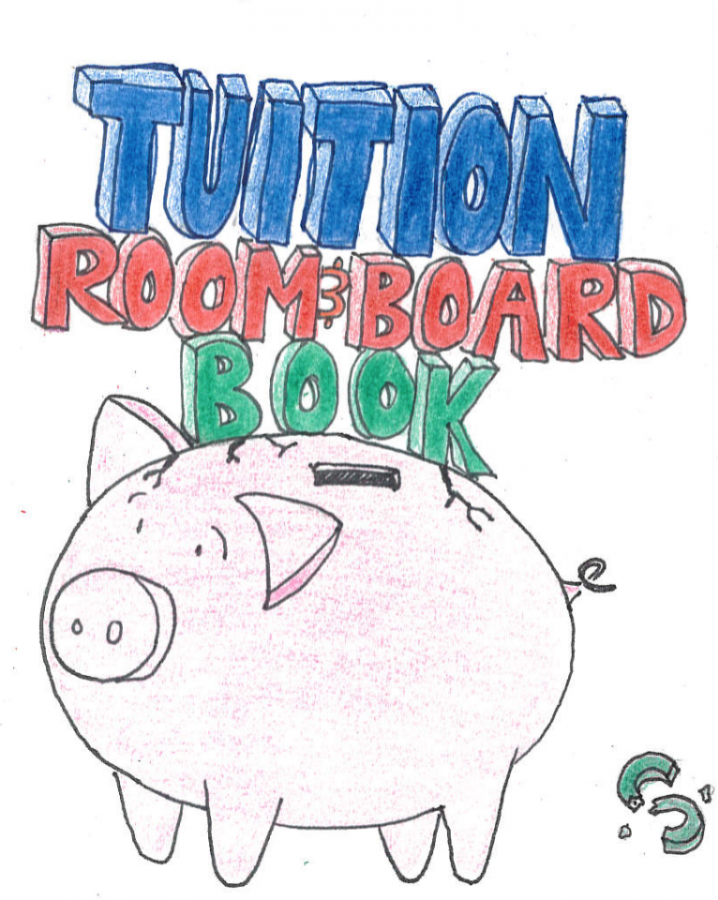College tuition weighs down students’ potentials
Students struggle with the burden of debt while trying to build their futures
Credit: Illustration by: Olivia Weinberg
December 14, 2017
Empty coffee cups, tears, sleepless nights, biting nails. The stress of getting into college is already harsh enough, but for many concerns extend beyond just getting that sought-after acceptance letter; college tuition can be quite pricey.
While this may not be the case for many Hackley students, more than 44% of whom surveyed by the Dial were not concerned at all by the costs of college tuition, there are still many in the community for whom the implications of paying tens of thousands of dollars a year is very real.
Many, protected by the buoyancy of wealth, may take the cost of college tuition for granted; the financial aspects of higher education are a matter for their parents, not them. Yet in its effort for diversity, Hackley has attracted students of various financial backgrounds, and many are forced to be cognizant of the tuition costs.
Since the 1980s the cost of a college education on average has tripled, rising faster than even medical care. But the fact remains, college is a worthwhile investment; while steep prices for private institutions may make them unaffordable for many, for those who can make the investment, a college education significantly increases students’ long-term economic prospects. According to study from Georgetown regarding employment through 2018, around 63% of jobs will require some form of a college education or degree, and degree owners can expect to earn between 600,000 to 1 million dollars more over a 40 year work period, a substantial gain over a lifetime of work.
Despite the continuing benefits of a college education, for many students, even being able to afford the opportunity to receive such an education is not a given. Having a roof over your family’s head and keeping them well fed takes priority over going to school for another four years, and if the two are in conflict, a choice must be made. For Hackley students, the name of a college and its prestige can often take the lead in this decision. While these large universities and colleges often offer grants and opportunities to work to students, able to compensate with endowment funds, it is not a perfect solution to the problem of affordability for all.
Senior Vinay Bijoor explained how Financial aid has allowed him greater, though not full accessibility to apply to colleges he wanted: “There’s a certain bracket of schools I would consider for EA (early action) or ED (early decision) if they give me a grant.”
While decreased options and incomplete compensations may restrict some students’ choices and persuade them to refuse acceptances to reputable colleges, the higher stakes for their choice has a silver lining; choosing a college becomes a more focused process.
For Senior Edwin Garcia, this choice is particularly clear. He explained that he has no intention of going to a “party school”’ where he thinks the social environment is prioritized over classes and education, as his family can’t take tens of thousands of dollars for granted. The decision comes down to balancing costs and gains; where can he get the most education relevant to a future job without economically crippling family. For students like him, getting the biggest bang for your buck is most important, where each buck means more.
The ever-increasing cost of college tuition has pushed students to change their application process in two ways. First, their family must be able to afford the costs in the first place, through either grants or choosing to apply to lower cost schools. Then they must consider whether or not the investment is worth it. When the stakes of money are high, applying to college becomes only more complicated and stressful.

